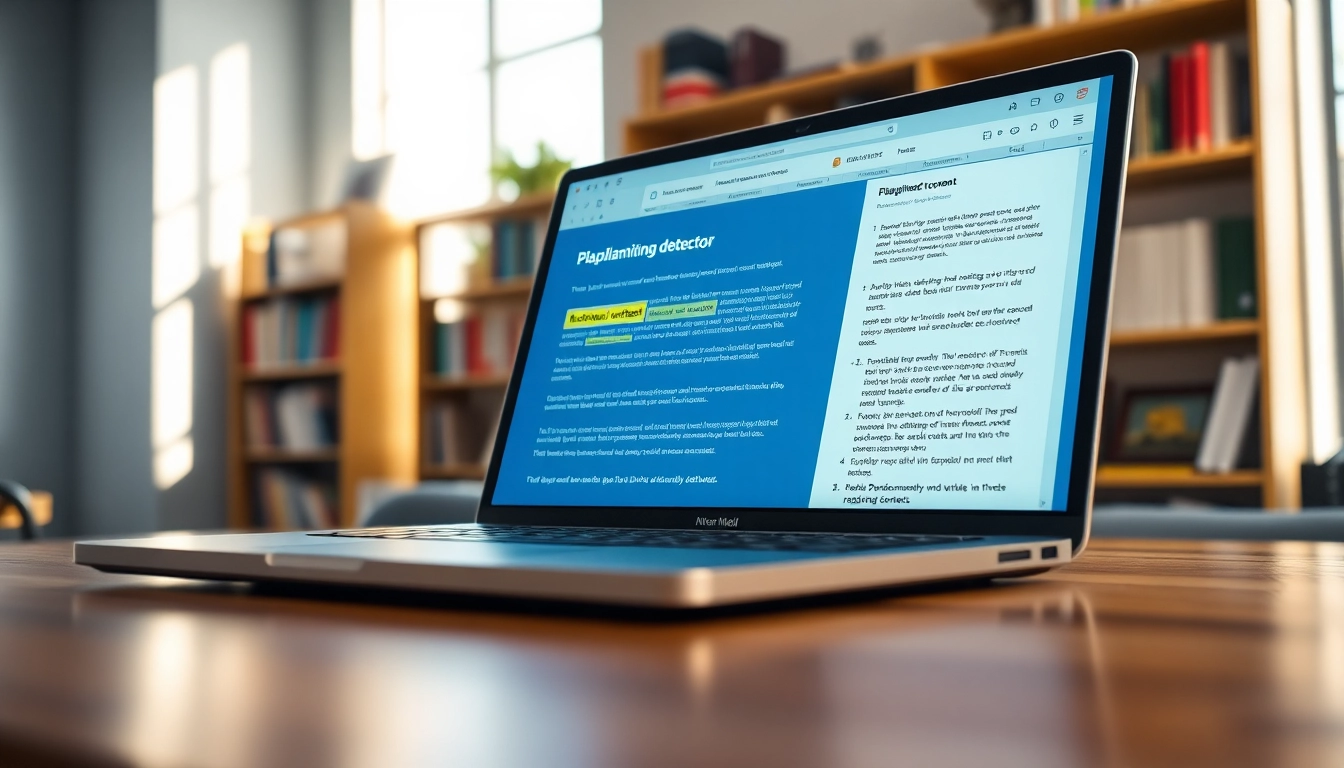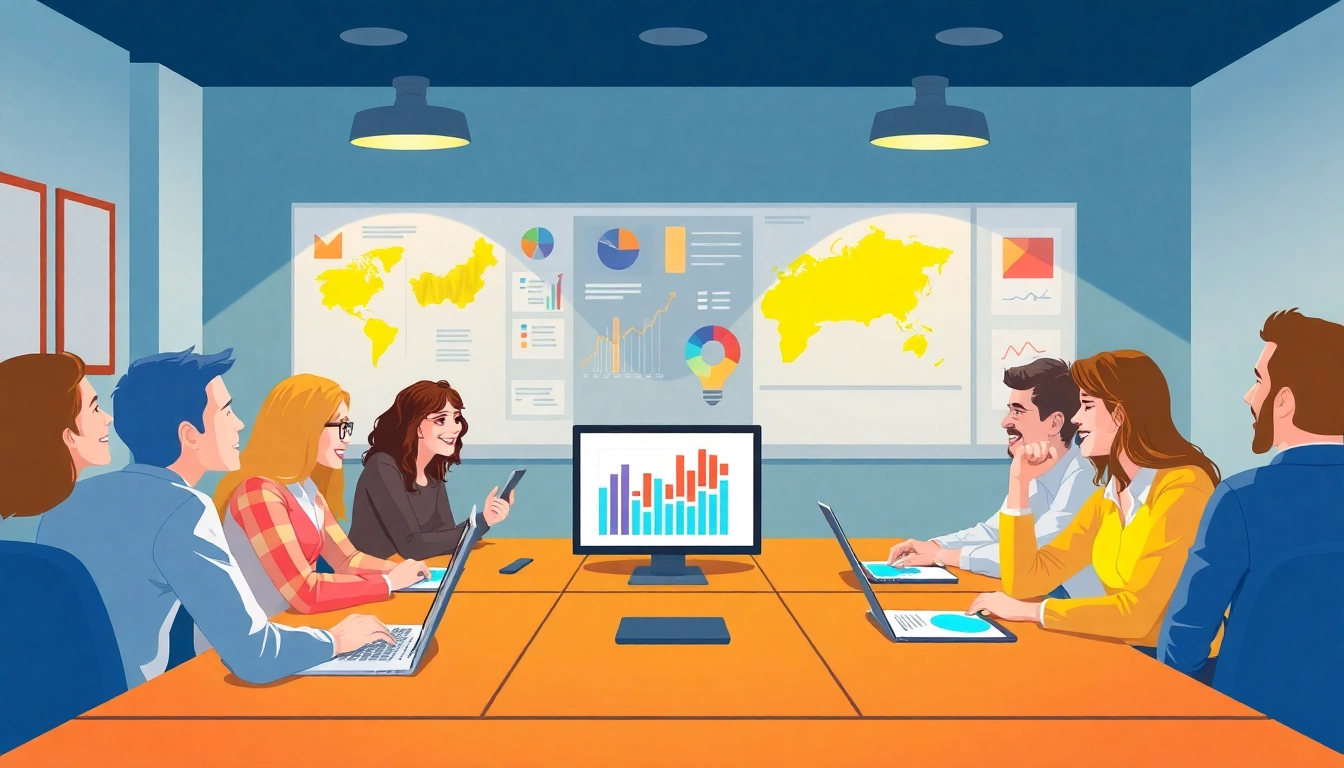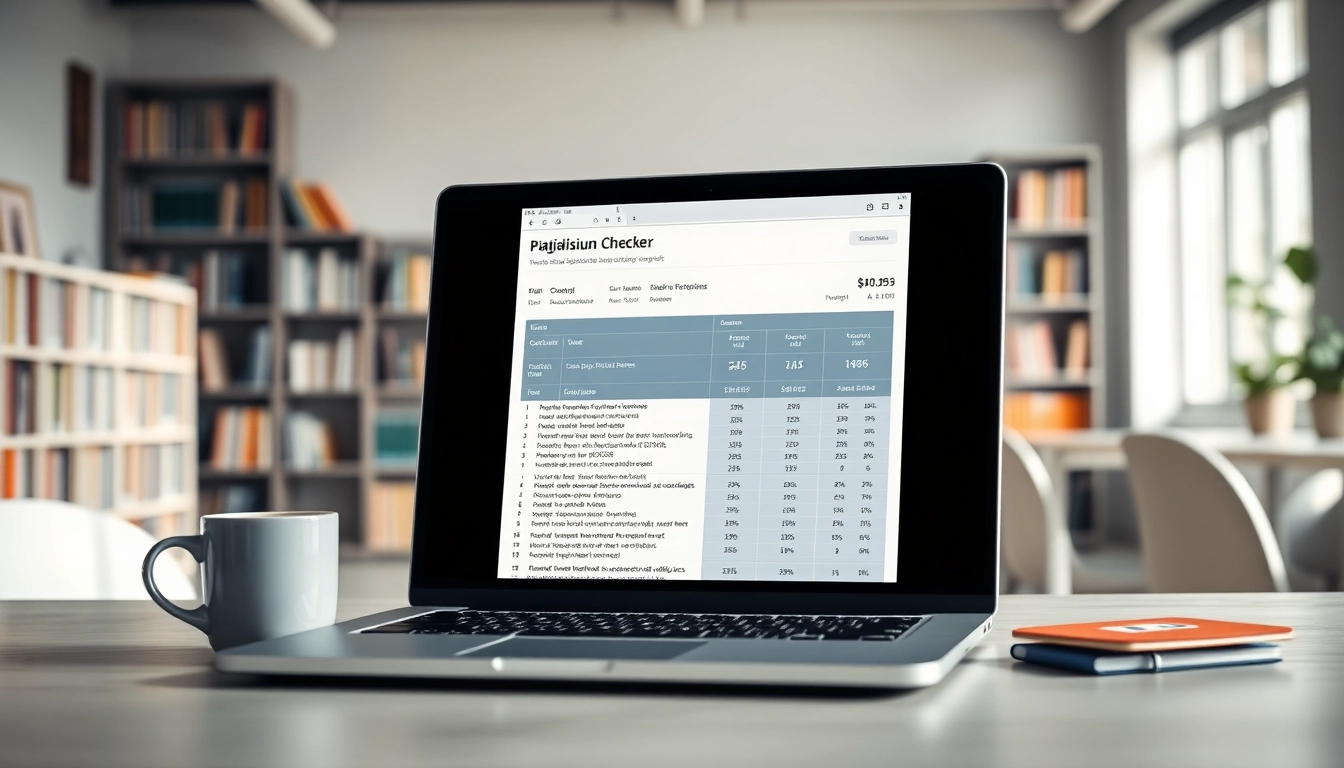Understanding Plagiarism and Its Impact
Plagiarism is a pervasive issue that affects academia, journalism, and the professional world alike. Whether intentional or accidental, the act of taking someone else’s work, ideas, or expressions and presenting them as one’s own can lead to dire consequences for individuals and organizations. In an age where information is readily available and easily accessible, understanding the nuances of plagiarism is essential for maintaining integrity in writing. Utilizing a plagiarism detector can significantly aid in safeguarding against these pitfalls.
Defining Plagiarism: Types and Examples
Plagiarism can take many forms, each with its characteristics and implications. Below are some common types:
- Direct Plagiarism: Copying text word-for-word without citation is the clearest form of plagiarism. For example, submitting an essay with a paragraph taken verbatim from a published paper without appropriate credit.
- Self-Plagiarism: Reusing one’s previous work in a new context without proper acknowledgment can be misleading, such as submitting the same paper for different classes.
- Patchwriting: This involves rephrasing someone else’s work while maintaining the original structure or ideas, which can still be considered plagiarism.
- Accidental Plagiarism: Poor note-taking or misunderstanding citation rules can lead to unintentional plagiarism, often resulting from students failing to credit their sources correctly.
- Data Plagiarism: This type occurs when a researcher uses someone else’s data or results without proper attribution, which can violate academic integrity standards.
Consequences of Plagiarism in Academia and Business
The repercussions of plagiarism are severe and can vary based on the context:
- Academic Consequences: In educational environments, students caught plagiarizing may face failing grades, academic probation, or even expulsion. Educational institutions prioritize academic honesty and uphold rigid standards to foster a genuine learning environment.
- Professional Consequences: In the workplace, plagiarism can lead to loss of credibility, job termination, and legal actions. Companies invest in developing their brand identity and trust; a single act of plagiarism can jeopardize that.
- Legal Consequences: Copyright infringement resulting from plagiarism can lead to costly lawsuits, fines, and damages. Authors or artists may seek legal recourse against plagiarists, leading to financial and reputational harm.
Recognizing Common Misunderstandings About Plagiarism
Misunderstandings about plagiarism can lead to inadvertent violations. Some common misconceptions include:
- Only Written Work Can Be Plagiarized: Many believe plagiarism concerns only written text, but plagiarism can also involve images, music, and code.
- Citing Sources Means You Can Use Any Material: Proper citation does not eliminate plagiarism. It is important to ensure that the use of materials falls within fair use guidelines and that they are relevant to the new work.
- Plagiarism is Only an Issue for Students: Professionals and academics can also commit plagiarism, impacting their careers and reputations regardless of their experience level.
How Plagiarism Detectors Work
Behind the Technology: Algorithms in Plagiarism Detection
Plagiarism detection tools employ sophisticated algorithms to identify similarities between texts. These algorithms typically function through a variety of methods:
- Text Matching: Basic algorithms search for exact matches between the submitted text and existing sources in databases. This helps in identifying direct plagiarism quickly.
- N-gram Analysis: More advanced algorithms break down the text into smaller chunks (n-grams) to find similarities in phrasing and structure, allowing for the detection of paraphrased ideas.
- Semantic Analysis: Some detectors evaluate the meaning of the content rather than just the words, helping to uncover discrepancies in paraphrasing that might not be caught by other methods.
- Cross-Language Detection: Tools equipped with cross-language detection can identify plagiarism across different languages, which is crucial in today’s multicultural and multilingual academic environments.
Understanding Similarity Reports and Metrics
When a plagiarism detector assesses a piece of work, it generates a similarity report highlighting potential plagiarized content. Key components of a similarity report typically include:
- Overall Similarity Score: A percentage that indicates how much of the text matches existing sources, allowing users to gauge the originality of their work.
- Highlighted Text Matches: Specific excerpts from the document that have been flagged as potentially plagiarized, often linked to the original source for easy reference.
- Source Links: Direct links to the identified sources, providing a clear pathway for the user to check and verify the claims made in the report.
Importance of Context in Plagiarism Detection
Context plays a critical role in accurately assessing plagiarism. Factors such as the author’s intent, the nature of the borrowed material, and the target audience should also be considered:
- Intent: Understanding whether a piece of work was plagiarized intentionally or accidentally can impact the consequences faced by the individual.
- Familiarity with Academic Standards: Different fields may have varying standards on acceptable practices in citation and idea sharing, making context critical in evaluating potential plagiarism.
Choosing the Right Plagiarism Detector
Key Features to Look for in a Plagiarism Detector
When selecting a plagiarism detector, several key features can ensure the tool effectively meets your needs:
- User-Friendly Interface: Intuitive design allows users to navigate the tool efficiently, making the process of submitting and reviewing reports straightforward.
- Database Coverage: A robust plagiarism detector should have access to a wide array of databases, including academic journals, websites, and books, to ensure comprehensive scanning.
- Real-Time Checking: Tools that provide on-the-spot checking can save time, particularly in academic and professional settings.
- Customizable Reports: The ability to tailor reports to meet specific needs is essential, especially for educators or writers who require detailed insights into potential issues.
- Integration Capabilities: A plagiarism detector that integrates with writing software, content management systems, or educational platforms is ideal for seamless operation.
Free vs. Paid Plagiarism Detection Tools
When considering plagiarism detection tools, it is essential to weigh the pros and cons of free versus paid options:
- Free Tools: These are generally adequate for basic checking needs, but they may lack comprehensive databases and advanced features.
- Paid Tools: While they require a financial investment, paid services often provide more accurate results, higher database coverage, and better customer support options.
Comparative Analysis of Popular Plagiarism Detectors
Below is a comparison of several popular plagiarism detection tools, emphasizing their unique features and functionalities:
- Grammarly: Known primarily as a grammar checker, Grammarly also features a robust plagiarism detection tool that leverages its extensive database to identify copied content.
- Turnitin: Widely used in educational settings, Turnitin offers comprehensive submissions and originality checking, making it a top choice among institutions.
- Copyscape: Tailored for web content, Copyscape is an excellent tool for online writers seeking to prevent content duplication across the internet.
- Plagscan: This tool provides a detailed analysis of written work, offering features tailored to educators and businesses alike.
Best Practices for Academic Integrity
Tips for Proper Citation and Avoiding Plagiarism
Understanding how to cite sources properly is paramount in portraying academic integrity. Here are some best practices to follow:
- Know Citation Styles: Familiarize yourself with the citation style you are using (APA, MLA, Chicago, etc.) to ensure correct formatting.
- Keep Track of Sources: Maintain diligent notes on sources you plan to reference in your work, which can ease the citation process.
- Use Quotation Marks: When using a direct quote, ensure you enclose it in quotation marks and follow it with a citation.
How to Use Plagiarism Detectors Effectively
Using plagiarism detectors effectively requires a strategic approach. Consider the following tips:
- Check Before Submission: Always run your work through a plagiarism detector before final submission to catch unintentional similarities.
- Review Similarity Reports: Take the time to thoroughly understand the results, identifying any areas of concern that require revision.
- Consult Style Guides: If similarities are flagged, double-check against citation guidelines to ensure proper attribution.
Creating Original Content: Strategies and Techniques
To foster originality in writing, consider implementing the following strategies:
- Brainstorm Ideas: Spend time generating unique perspectives and concepts during the planning stage to minimize reliance on existing work.
- Establish a Clear Voice: Developing your writing voice ensures that your work reflects your individuality, making it less likely to mirror others’ styles.
- Practice Paraphrasing: Hone the skill of paraphrasing effectively to express others’ ideas in your voice while still providing credit.
Future of Plagiarism Detection Technology
The Role of AI in Evolving Plagiarism Detection
Artificial Intelligence (AI) is poised to revolutionize plagiarism detection technology through more sophisticated algorithms and machine learning capabilities:
- Self-Learning Algorithms: AI systems that learn from previous detection efforts can improve accuracy over time, adjusting to new writing styles and linguistic trends.
- Contextual Understanding: AI can analyze larger contexts, improving the interpretation of text being evaluated and enhancing similarity analysis.
Projected Trends in Plagiarism Checking Tools
As plagiarism detection technology develops, several trends are emerging:
- Integration with Educational Tools: Expect to see plagiarism checkers further integrated with educational platforms for easy access and seamless use.
- Focus on Real-Time Detection: Tools will continually evolve to provide more immediate feedback, making it effortless for writers to ensure originality as they write.
- Emphasis on User Privacy: As encryption and data privacy become more vital, plagiarism detection services will need to prioritize user data protection.
Ethical Considerations in Plagiarism Detection
With advancements in plagiarism detection technology come ethical considerations. Issues to ponder include:
- User Trust: Ensuring that tools handle user data responsibly will be crucial for maintaining trust with clients and institutions alike.
- Equity in Access: As advanced tools become more critical in the academic space, providing equitable access to all students, regardless of their financial situation, will be a major concern.



